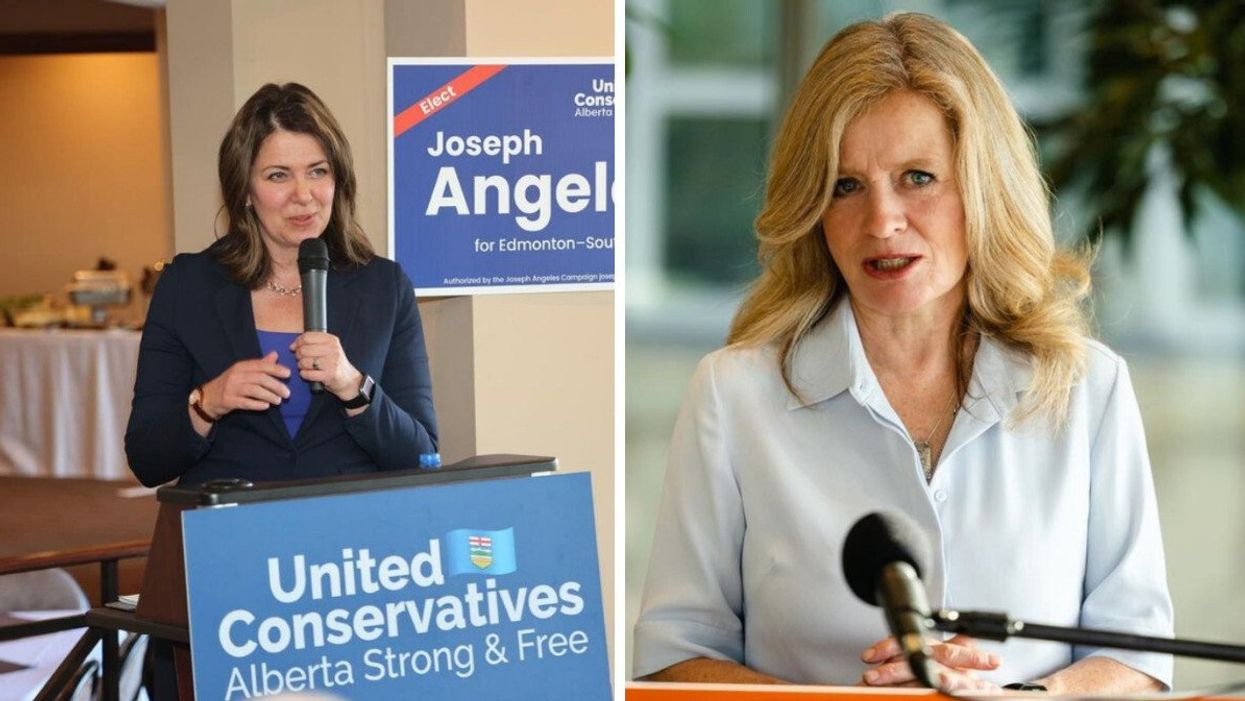The Alberta Election Is Coming Up This Month & Here's Everything You Need To Know
Election Day is May 29.

Alberta premier Danielle Smith. Right: NDP leader Rachel Notley.
The Alberta election has officially been called and Albertans will be heading to the polls later this month to cast their vote.
The election officially kicked off on Monday, May 1, ahead of the 31st provincial election on Monday, May 29.
“We are excited to welcome Albertans back to the polls this month,” Glen Resler, Alberta’s Chief Electoral Officer, said in a news release.
So if you're heading out to vote this month, here's what you need to know.
When is the next election in Alberta?
Alberta's provincial election is set to take place on Monday, May 29, 2023. Albertans can receive a special ballot now, which can be completed at the returning office, picked up by a designate on your behalf or mailed anywhere in the world.
You can apply for a special ballot online through the Elections Alberta website.
Advance voting in the province begins on Tuesday, May 23, and runs through to Saturday, May 27.
Polls will be open across Alberta from 9 a.m. to 8 p.m. on Monday, May 29, with the official results available on June 8.
What parties are running in the Alberta election 2023?
Several parties are running in Alberta's provincial election, including the Alberta New Democratic Party (NDP), the United Conservative Party (UCP) and the Wildrose Independence Party, according to Elections Alberta.
Candidate nominations are open now and will end on May 11, 2023.
The main battle in the Alberta election will be between the UCP and Alberta's current Premier Danielle Smith and former premier, NDP Leader Rachel Notley.
Who is eligible to vote in the Alberta election?
If you're looking to vote in the Alberta election, you'll need to be a Canadian citizen that lives in Alberta and be at least 18 years of age or older on Election Day.
You'll also need to be able to prove your identity and current address. Valid forms of ID include:
- Providing one piece of Government-issued photo ID, including your full name, current address, and a photo.
- Providing two pieces of ID, both containing your full name and one that lists your current physical address.
- Having another registered elector with identification that resides in their voting area vouch for you.
- Having an authorized signatory complete an attestation form.